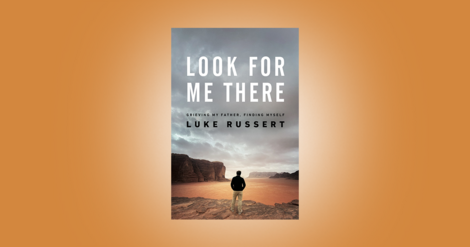“Look for Me There” by Luke Russert is more than just a book; it is an evocative journey that compels readers to navigate the liminal spaces between personal grief and the broader human experience. Russert, known for his keen insights and engaging storytelling, takes us through a labyrinth of emotions, inviting us to reflect on our own lives and experiences while urging us to search for meaning in the strenuous labyrinth of loss.
At its core, “Look for Me There” promises a paradigm shift in the way we perceive personal narratives. Emulating a modern-day pilgrim, Russert traverses the landscapes that shaped his life amid the shadows of familial sorrow and public expectation. The author poignantly grapples with the death of his father—a prominent figure in American journalism—and through this lens, offers a piercing glimpse into the intricacies of grief. The title itself is a siren call to the reader; it urges us to search for traces of the past, to seek solace in the memories of those we have lost, and to find a renewed sense of self amidst the chaos.
The book unfolds gracefully, steeped in rich, descriptive prose that vividly conjures images of the varied locales Russert visits. From bustling city streets to tranquil countrysides, he encapsulates the essence of each place, allowing readers to almost physically accompany him on his journey. This seamless blending of narrative and setting enhances not only the storytelling but also evokes a palpable emotional resonance. Each location becomes more than just a backdrop; it symbolizes the emotional terrain that Russert traverses, memorializing moments of beauty, heartache, and clarity.
One of the most intriguing aspects of “Look for Me There” is Russert’s ability to weave together personal anecdotes with broader societal reflections. As he recounts intimate family stories, he juxtaposes them with larger cultural moments, effectively illustrating how the communal experience of loss is often intertwined with the collective narrative of a nation. Through this, he piques curiosity and encourages readers to contemplate their own lives and how personal histories are always reflective of a greater societal context. What emerges is a narrative that feels simultaneously personal and universal, a masterful blend that keeps readers engaged and introspective.
The anecdotes, while detailed and specific to Russert’s experiences, exude a relatable quality that invites readers to consider their personal ties to similar sentiments. Moments of laughter amid tears, tenderness amidst hardship—these dualities are central to the human condition and are presented authentically. The author’s skillful recounting of experiences elicits empathy and provokes contemplative thought. The duality of emotions resonates deeply with readers, ensuring that each page is imbued with relatability and relevance.
Moreover, Russert’s poignant reflections on memory and legacy add layers to the narrative. He invites readers to ponder questions that resonate deeply: What memories do we cherish? How do we wish to be remembered? “Look for Me There” serves as an exploration of the human desire to connect, to belong, and to leave a mark on the world—a wish that is inherent in every soul’s journey. The narrative is replete with profound wisdom presented in poetic fragments; moments that urge reflection without offering all the answers. This implicit invitation to explore one’s own psyche creates a magnetic pull, urging readers to dig deeper within themselves.
In conjunction with these themes, the rhythm of the prose varies throughout the book, oscillating between heart-wrenching passages and lighthearted interludes. This deliberate fluctuation in tone accentuates the highs and lows of life, maintaining an engaging pace that mirrors the unpredictable journey of grief. Readers will find themselves laughing, tearing up, and ultimately reflecting as Russert effortlessly navigates through his experiences. The ebb and flow of emotions allow the reader to immerse themselves fully in the journey, making each chapter an evocative chapter not merely in the book but within the reader’s own narrative.
Furthermore, the author’s authenticity shines through. His honest portrayal of struggles and triumphs resonates on a personal level, creating an implicit trust with readers. This transparency engenders a sense of camaraderie, as if Russert is inviting readers into a private space to share in intimate revelations and realizations. This tapestry of vulnerability and strength invites readers to confront their layers of resilience, thus enhancing the book’s allure.
While grief is often portrayed as a solitary path, Russert skillfully elucidates the idea that it is, in fact, a shared experience. By intertwining his personal journey with reflections on the collective human experience, he fosters a sense of unity among readers. This communal reflection ensures that “Look for Me There” is ultimately a hopeful narrative about healing and reconnection. The concluding messages are not merely about the pain of loss, but rather the enduring hope of finding peace and understanding through the remnants of the past.
Ultimately, “Look for Me There” is an enriching exploration of memory, love, and resilience that prompts a deep introspection regarding our own experiences of loss. Through nuanced storytelling and profound insights, Russert not only shares his journey but creates a space for readers to reflect on their own lives. As we turn the pages, we are reminded that the quest for understanding and connection transcends our individual grief. This book is a testament to the enduring human spirit that craves exploration and finding places where we can “look for” the remnants of those we cherish. It is a compelling read that promises to leave a lasting impact—one that lingers long after the final page is turned.
